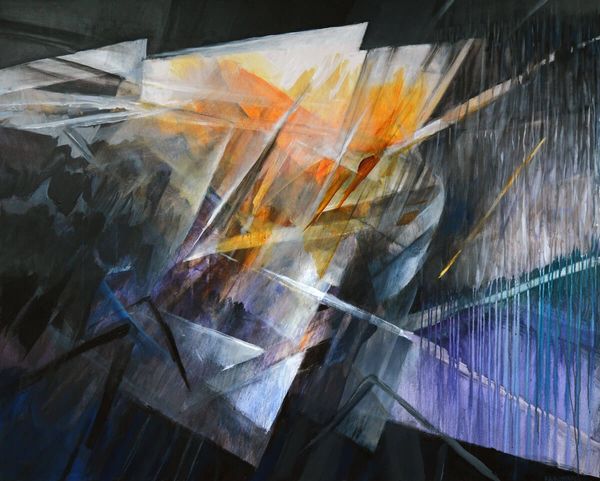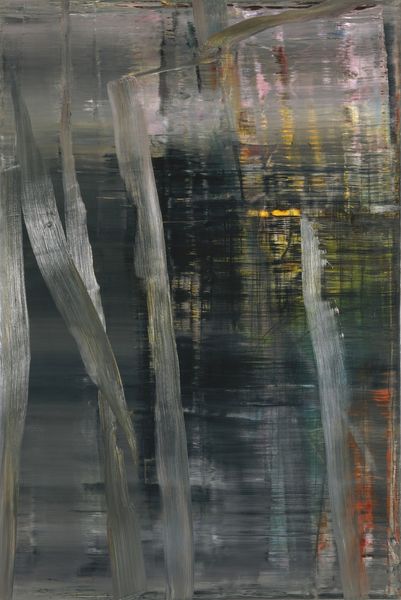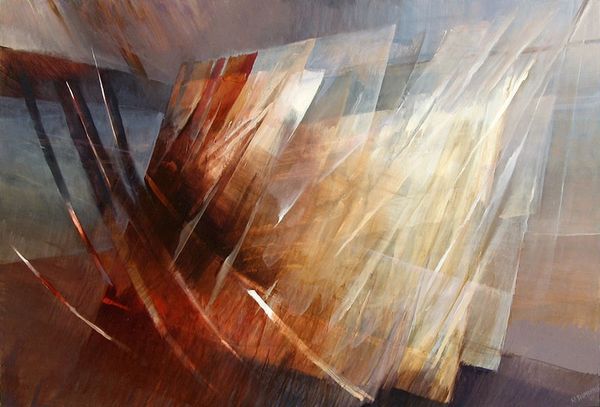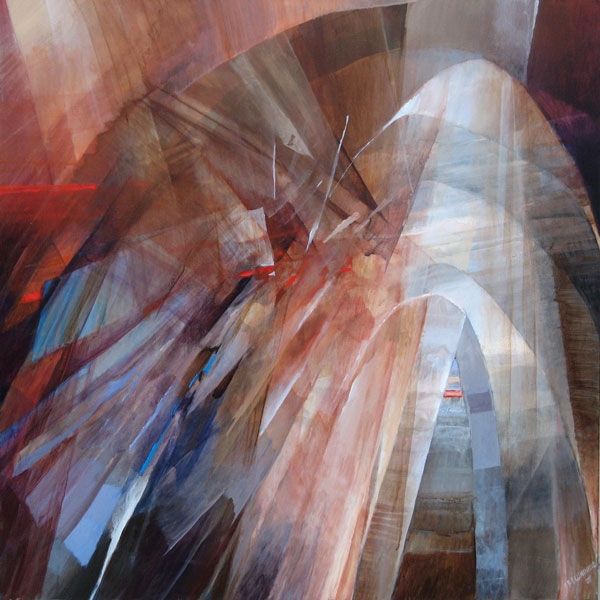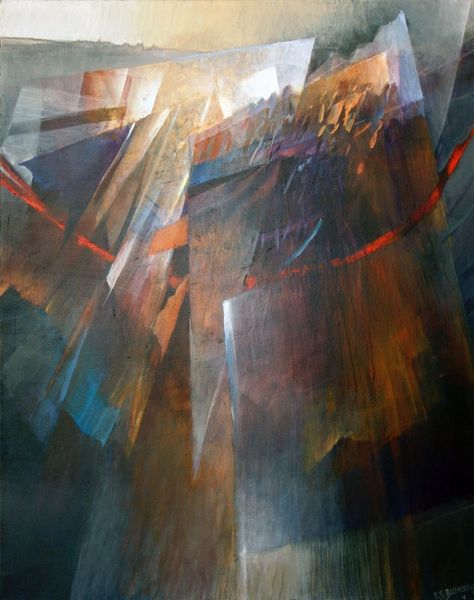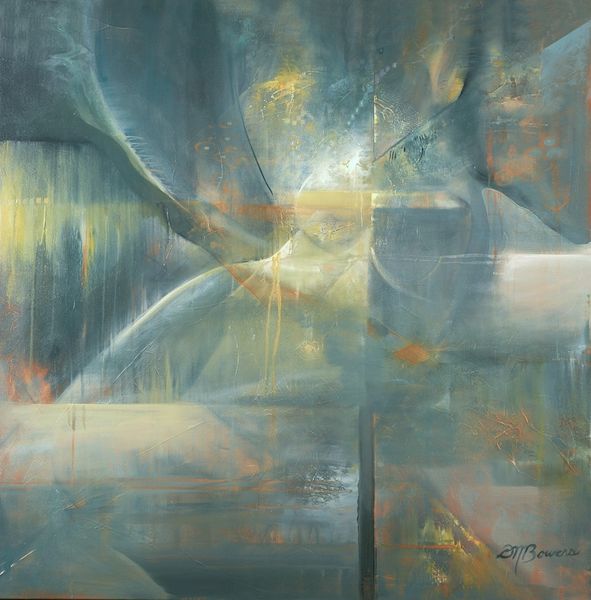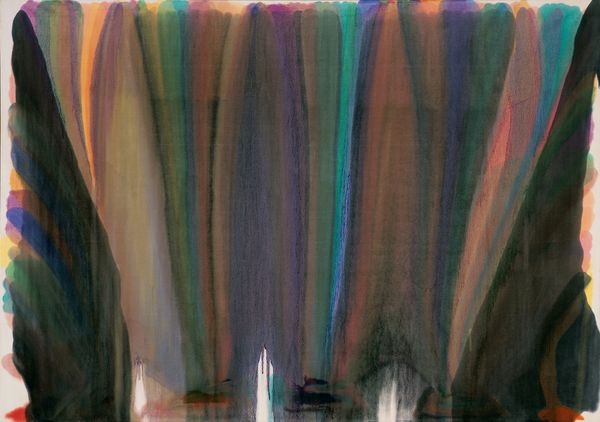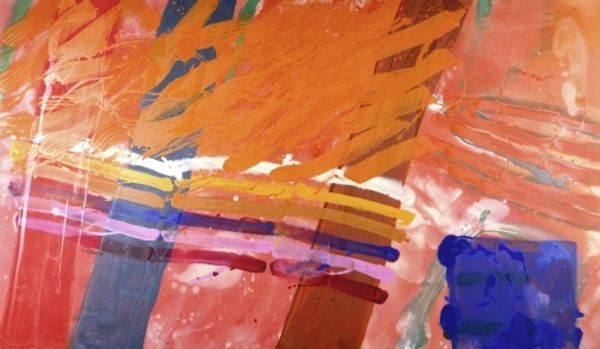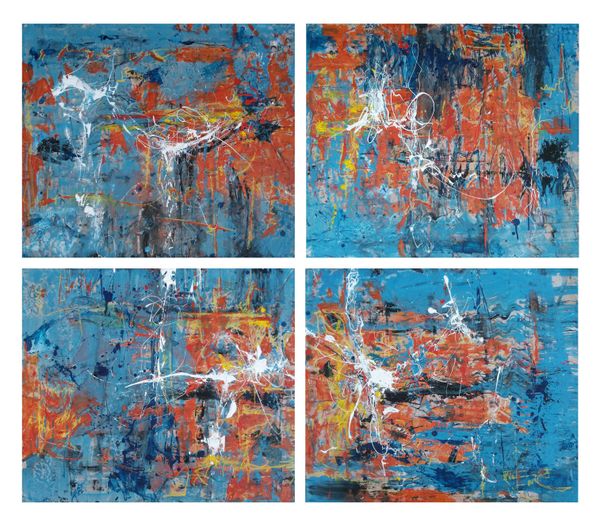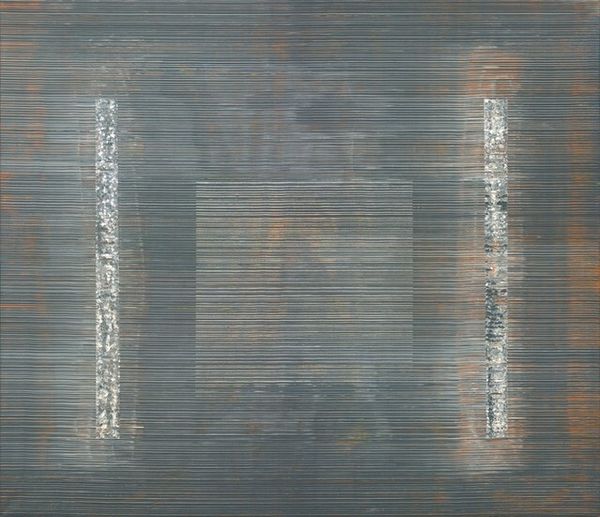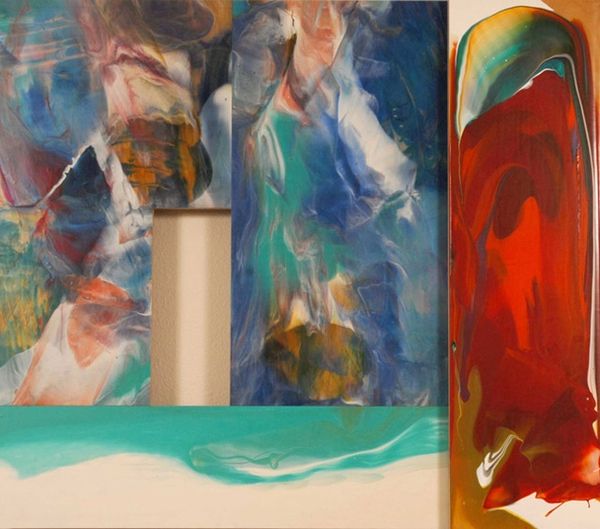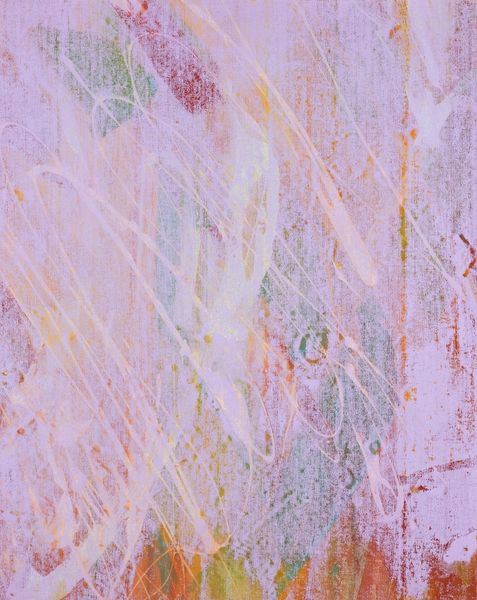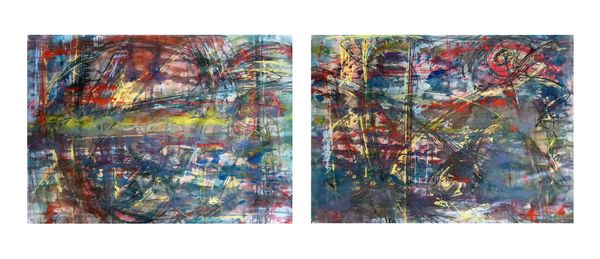
Dimensions: 172.72 x 342.9 cm
Copyright: Rochelle Blumenfeld,Fair Use
Curator: Standing before us is Rochelle Blumenfeld's 2012 acrylic triptych, "Why, Why, Why." Editor: My initial gut feeling is... fractured peace. Each panel is like looking through a kaleidoscope of emotional landscapes. Is it just me, or is there something slightly unsettling, yet strangely comforting about it? Curator: Unsettling and comforting - that tension is fascinating, isn't it? I read these geometric abstractions almost like maps of internal conflict, rendered through an expressionistic lens. The cool blues in dialogue with the warmer browns and reds... there’s a push and pull. Editor: I see that tension too, in how Blumenfeld seems to both construct and deconstruct at the same time. Those defined rectangular shapes throughout are constantly fighting against those furious strokes of color. It brings forth, I think, questions about structures of power that have no right to be where they are. I imagine that comes from its modernist influences? Curator: Possibly! As the artist's hand disrupts any easy categorization, and leaves it open for discussion, that tension becomes fertile ground. Personally, when I'm confronted with an abstract work like this, I wonder about intention. What "why" is the artist wrestling with, and do those individual whys matter as much as the universal act of questioning itself? It seems that the medium and brushstrokes here are not about delivering concrete answers but creating an introspective dialogue in and of itself. Editor: Blumenfeld doesn't let us off the hook, does she? We're forced to engage, to find our own "why" mirrored within it, maybe a challenge for more socially oriented spectators who wonder whether we're asking ourselves if systems of oppression need dismantling often enough? It feels more about sitting with the question rather than finding an immediate answer, which perhaps is more important. It's also significant to remember the impact of Abstract Expressionism more generally on artists reflecting post-war feelings of alienation and disconnection! Curator: Absolutely. It becomes less about aesthetic pleasure, more about confronting yourself through its layers. Thanks for drawing those threads of socio-political thought into the art here as well; art truly only comes to life with all of its viewers' varied outlooks combined. Editor: Always, because art invites us to be both vulnerable and critical simultaneously!
Comments
No comments
Be the first to comment and join the conversation on the ultimate creative platform.

